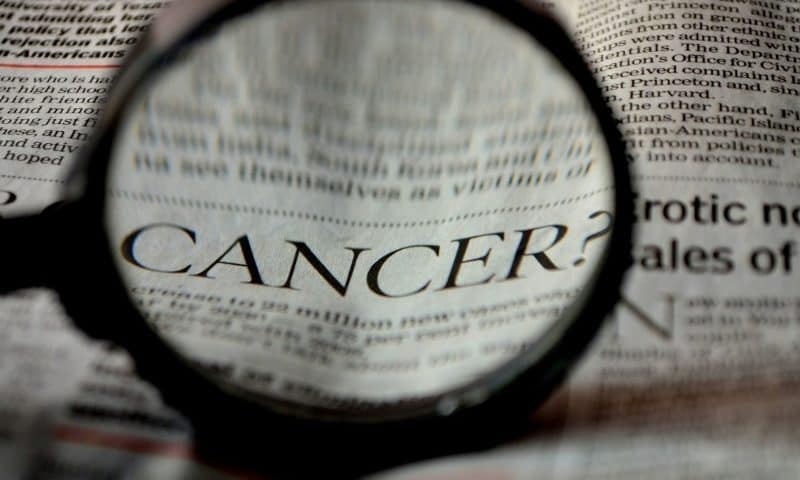Most efforts to sequence cancer genes have focused on the “exome,” the 1% of the genome that codes for proteins. But understanding the non-coding regions of cancer genomes could lead to a better understanding of what drives the disease in individual patients—and that insight might just lead to improved, more personalized treatments, a multinational group of scientists is now arguing.
Those researchers analyzed 2,600 genomes from 38 different tumor types, focusing on the 99% of genes that had not yet been sequenced. The resulting suite of 23 papers published today in several Nature journals could greatly expand the number of cancer patients who could benefit from personalized, targeted treatments, the lead scientists reported.
Exome sequencing generally reveals at least one targetable mutation that’s driving cancer in about two-thirds of patients, they explained during a press conference. They estimated that whole-genome sequencing, by contrast, would uncover cancer-driving mutations in 95% of patients. The studies were part of the ICGC/TCGA Pan-Cancer Analysis of Whole Genomes Project.
“To me, the most striking finding out of all of this…is just how different one person’s cancer genome is from another person’s,” said Peter Campbell, M.D., Ph.D., member of the Pan-Cancer steering committee and head of cancer, aging and somatic mutation at the Wellcome Sanger Institute, during the press conference. “We see thousands of different combinations of mutations that can cause the cancer and more than 80 different underlying processes generating the mutations in the cancer.”
One of the biggest discoveries from the project was a new method for “carbon dating” cancer—identifying cancer-causing mutations that occurred many years before the tumor itself emerged. A team led by the Francis Crick Institute developed the method by studying 47 million genetic changes in thousands of human tumors. First, they calculated how many times a single change had been copied and then duplicated across chromosomes. From there, they figured out the order and timing of the duplications.
The researchers used the carbon-dating method to determine that about 20% of mutations happen many years before the cancer is detected, and half of the changes occur in the same nine genes. They believe the finding could be used to develop new diagnostic tests for the early detection of cancer, they said in a statement.
In a separate Pan-Cancer study, Wellcome Sanger researchers worked with several other institutions to list “genetic fingerprints” of DNA-damaging processes that can cause cancer. These injuries are often caused by environmental factors and known carcinogens, like tobacco and UV rays. The researchers identified several new genetic fingerprints, such as single-letter DNA errors and large code deletions. The scientists hope other researchers will use the new data to further their research on the causes and development of cancer.
Most of the gain in the ability to find driver mutations in cancer patients is coming from a better understanding of regions of the genome that control how genes are switched on and off, the project leaders explained during the press conference.
“One of the fascinating things about this project is that although we greatly expanded the number of mutational events that contribute to cancer, we didn’t expand in any dramatic fashion the number of cancer-related genes or cancer-related pathways,” said Lincoln Stein, M.D., Ph.D., a member of the project’s steering committee and head of adaptive oncology at the Ontario Institute for Cancer Research. “We found the same pathways that had been identified by exome sequencing, but many more ways to change those pathways.”
That’s important, the researchers said, because it could improve how oncologists select targeted therapies for patients and track the changes that are occurring in their tumors during the treatment process.
The new data could also be used to improve the understanding of driver mutations. Take KRAS, Stein said. Some cancers occur when mutations in the gene’s protein-coding region activate it, while others are driven by multiple copies of KRAS or a structural re-arrangement in the gene. “The strong hypothesis is that the same drugs that treat over-active KRAS will work in each of those circumstances, but only one of those cases could be detected with exome sequencing,” Stein said. The ability to use data from whole-genome sequencing to determine which KRAS abnormality is driving a person’s cancer could point oncologists to the KRAS-targeted drug that’s most likely to produce a response.
All of the raw data from the new suite of studies will be made available to the research community. Campbell and Stein said they hope it will be used to generate new detection and treatment strategies.
“Cancer genome sequencing is beginning to enter the clinic,” Campbell said. “What we ultimately want to do is use these technologies to identify treatments that are tailored to each individual patient.”

